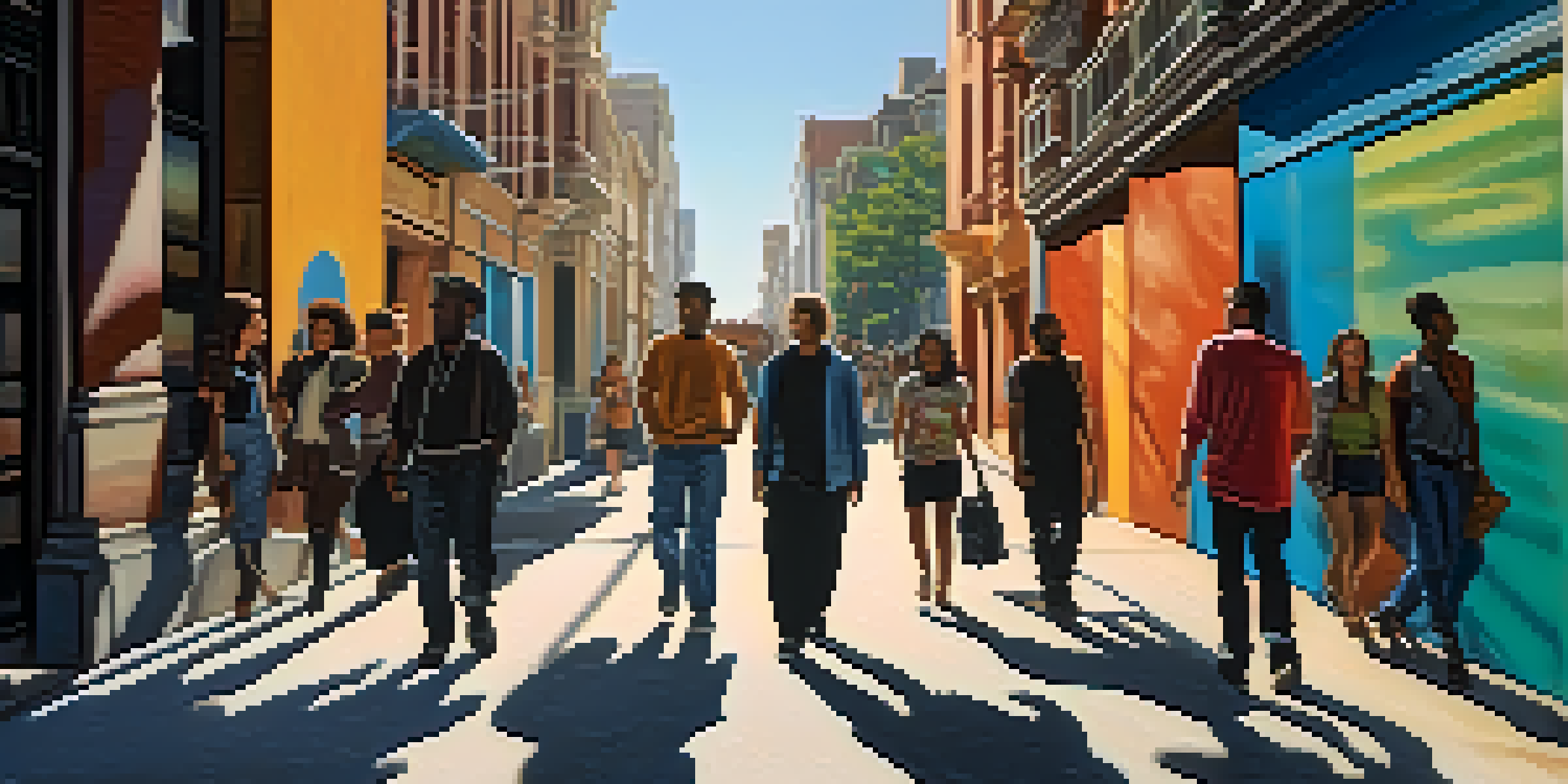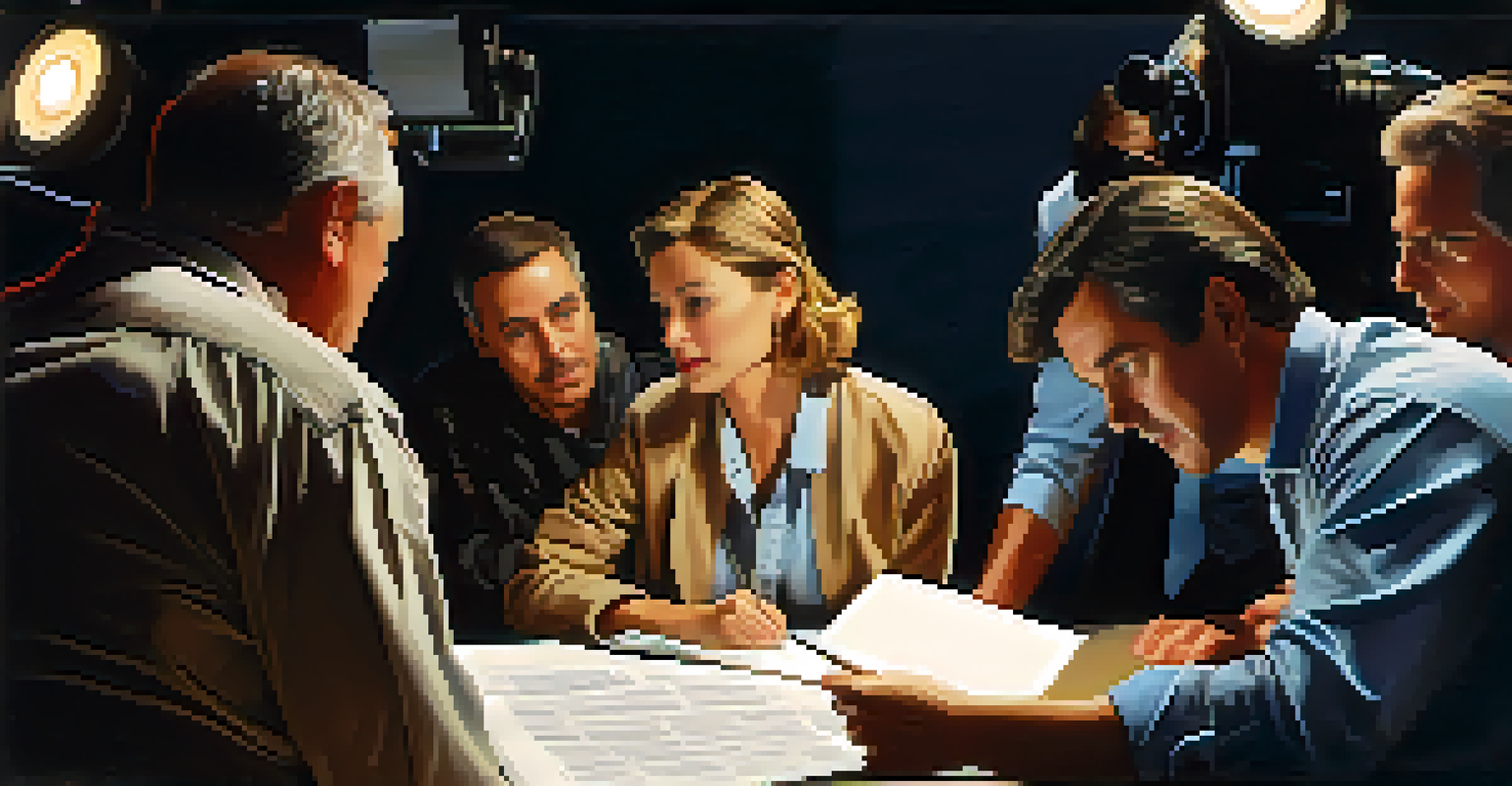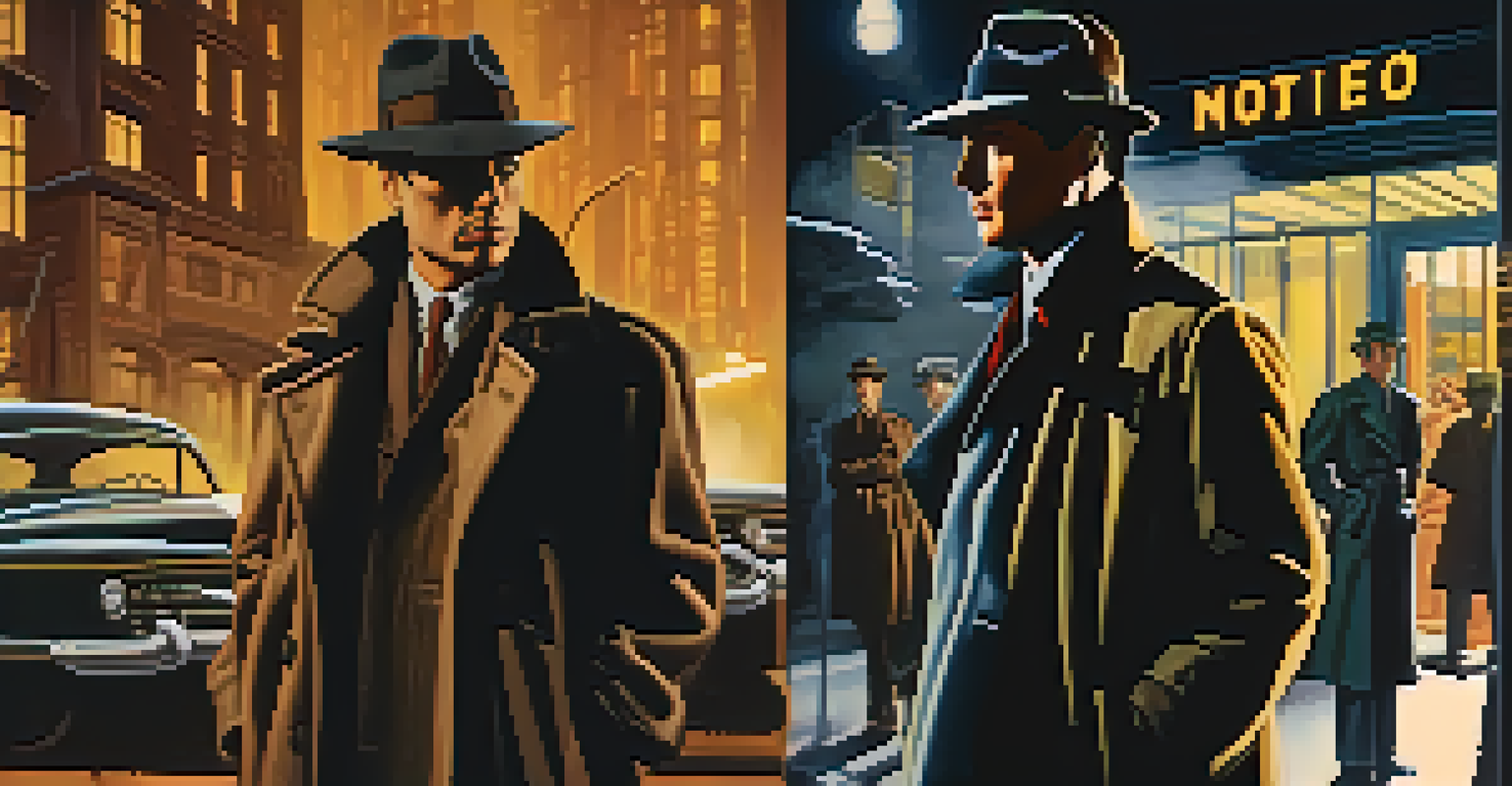The Role of Stereotypes in Hollywood Crime Narratives

Understanding Stereotypes and Their Impact
Stereotypes are oversimplified ideas about a group of people, often based on race, gender, or profession. In Hollywood, these stereotypes can shape how characters are portrayed, influencing audience perceptions and expectations. For instance, the archetype of the 'criminal mastermind' often leans toward a certain demographic, perpetuating biases that can affect real-world views.
Stereotypes are not just harmless tropes; they can have significant implications on public perception and social attitudes.
This oversimplification can lead to a narrow understanding of complex societal issues, such as crime and justice. When audiences repeatedly see certain groups depicted in negative ways, it can reinforce harmful beliefs and stigmas. In essence, stereotypes in film are not just harmless tropes; they can have significant implications on public perception and social attitudes.
As we dive deeper into Hollywood's narratives, it becomes clear that these portrayals can contribute to a cycle of misunderstanding and prejudice. The stories told on screen can influence how we think about crime, law enforcement, and the individuals involved. By examining these narratives critically, we can begin to unravel the impact of stereotypes in shaping societal norms.
Historic Context of Crime Narratives in Film
The portrayal of crime in Hollywood has evolved significantly over the decades, reflecting societal changes and cultural attitudes. Early films often depicted crime through a lens of morality, where good and evil were clearly defined. However, as society grappled with issues such as race relations and economic disparity, crime narratives began to mirror these complexities, often relying on stereotypes to convey broader themes.

For example, during the 1930s and 1940s, film noir emerged, showcasing a more cynical view of society. Characters were often portrayed as flawed and morally ambiguous, yet certain stereotypes persisted, particularly around race and class. This not only shaped the genre but also influenced public perceptions of crime and morality during that era.
Stereotypes Shape Public Perception
Stereotypes in films can reinforce harmful biases and narrow societal understanding of complex issues like crime and justice.
As time progressed, the evolution of crime narratives continued to reflect changing societal views and tensions. Yet, the reliance on stereotypes remained a common thread, often sidelining nuanced representations of crime and justice. Understanding this historical context is crucial for appreciating how these narratives have shaped contemporary views on crime.
The Influence of Crime Genres on Stereotypes
Different crime genres, such as thrillers, detective stories, and true crime documentaries, often employ stereotypes to quickly convey character traits and motivations. These genres thrive on tension and conflict, and stereotypes can serve as shorthand for audiences. For instance, the 'violent gang member' is a character type that immediately evokes certain expectations and fears, often without deeper exploration of their story.
The media does not merely reflect reality but actively shapes it, creating a feedback loop that influences both storytelling and public perception.
However, this reliance on stereotypes can lead to one-dimensional characterizations that fail to reflect the diversity of real-life experiences. While audiences may find comfort in familiar tropes, the lack of depth can perpetuate misunderstandings about those depicted. In essence, while these narratives can be entertaining, they often miss the opportunity to challenge preconceived notions.
Moreover, the impact of these stereotypes can extend beyond the screen, influencing how individuals are treated in real life. When film and television consistently depict certain groups in a negative light, it can affect public perceptions and treatment of those communities. This underscores the importance of crafting more complex and varied representations in crime narratives.
Case Studies: Stereotypes in Popular Crime Films
Examining specific crime films can illuminate how stereotypes are woven into storytelling. For instance, movies like 'Scarface' and 'Training Day' often depict Latino and African American characters as criminals or corrupt figures, reinforcing harmful stereotypes. These portrayals can overshadow the rich, diverse narratives that exist within these communities, reducing individuals to mere caricatures.
Conversely, films like 'The Godfather' have showcased Italian-American characters in a multi-dimensional light, yet still perpetuate certain stereotypes about organized crime. While these films may be critically acclaimed, they still contribute to the ongoing narrative around ethnicity and crime, leaving viewers with lasting impressions based on these portrayals.
Historical Evolution of Crime Films
The portrayal of crime in Hollywood has evolved, reflecting societal changes but often relying on stereotypes that oversimplify narratives.
By analyzing the impact of these films, we can better understand how stereotypes shape public perceptions of crime and justice. These case studies serve as a reminder of the responsibility filmmakers hold in portraying characters authentically and breaking away from reductive narratives.
The Role of Media Representation in Shaping Views
Media representation plays a crucial role in shaping societal views, particularly regarding crime. When certain groups are consistently portrayed as criminals in films and television, it can lead to broader societal beliefs that link race or ethnicity with criminality. This is not just an issue of entertainment; it has real-world implications for how communities are perceived and treated.
For instance, studies have shown that heavy consumption of crime media can influence viewers' perceptions of crime rates and the likelihood of victimization. This can lead to increased fear or mistrust of certain communities, perpetuating a cycle of prejudice. In this way, the media does not merely reflect reality but actively shapes it, creating a feedback loop that influences both storytelling and public perception.
Thus, it's essential for filmmakers and content creators to consider the implications of their portrayals. By striving for more accurate and varied representations, the media can help dismantle stereotypes and promote a more nuanced understanding of crime and its context in society.
Challenging Stereotypes: Positive Trends in Hollywood
Despite the prevalence of stereotypes in crime narratives, there are positive trends emerging in Hollywood that challenge these outdated portrayals. Many filmmakers are now committed to creating more authentic and complex characters, moving beyond the typical archetypes. This shift is partly driven by audience demand for more diverse and nuanced storytelling.
For instance, shows like 'Mindhunter' and films like 'Black Panther' explore the psychological and social factors behind crime, presenting characters as multifaceted individuals rather than mere stereotypes. These narratives encourage viewers to engage with the complexities of crime and justice, fostering empathy and understanding.
Audience Power to Drive Change
Audiences can influence crime narratives by demanding diverse representations and engaging in discussions about the impact of stereotypes.
Additionally, the rise of platforms that prioritize diverse voices and stories has paved the way for fresh perspectives on crime narratives. By embracing these positive trends, Hollywood can play a vital role in reshaping societal views and breaking the cycle of stereotypes that have long dominated the genre.
How Audiences Can Influence Change in Crime Narratives
Audiences hold significant power in influencing how crime narratives are shaped and portrayed in Hollywood. By demanding more diverse and authentic representations, viewers can push filmmakers to rethink stereotypes and create richer narratives. This can be accomplished through social media, petitions, and supporting films that challenge the status quo.
Moreover, engaging in discussions about the impact of stereotypes can foster a more critical view of crime narratives. When audiences recognize the implications of these portrayals, they can advocate for change, encouraging studios to invest in projects that prioritize authenticity over cliché. This collective voice can make a substantial difference in the types of stories that get told.

Ultimately, the responsibility of change lies not only with filmmakers but also with audiences. By actively participating in the conversation around representation, viewers can help shape a future where crime narratives are more reflective of reality, fostering understanding and compassion rather than perpetuating harmful stereotypes.